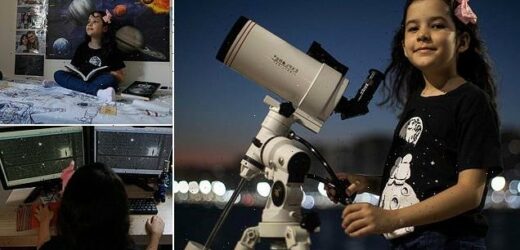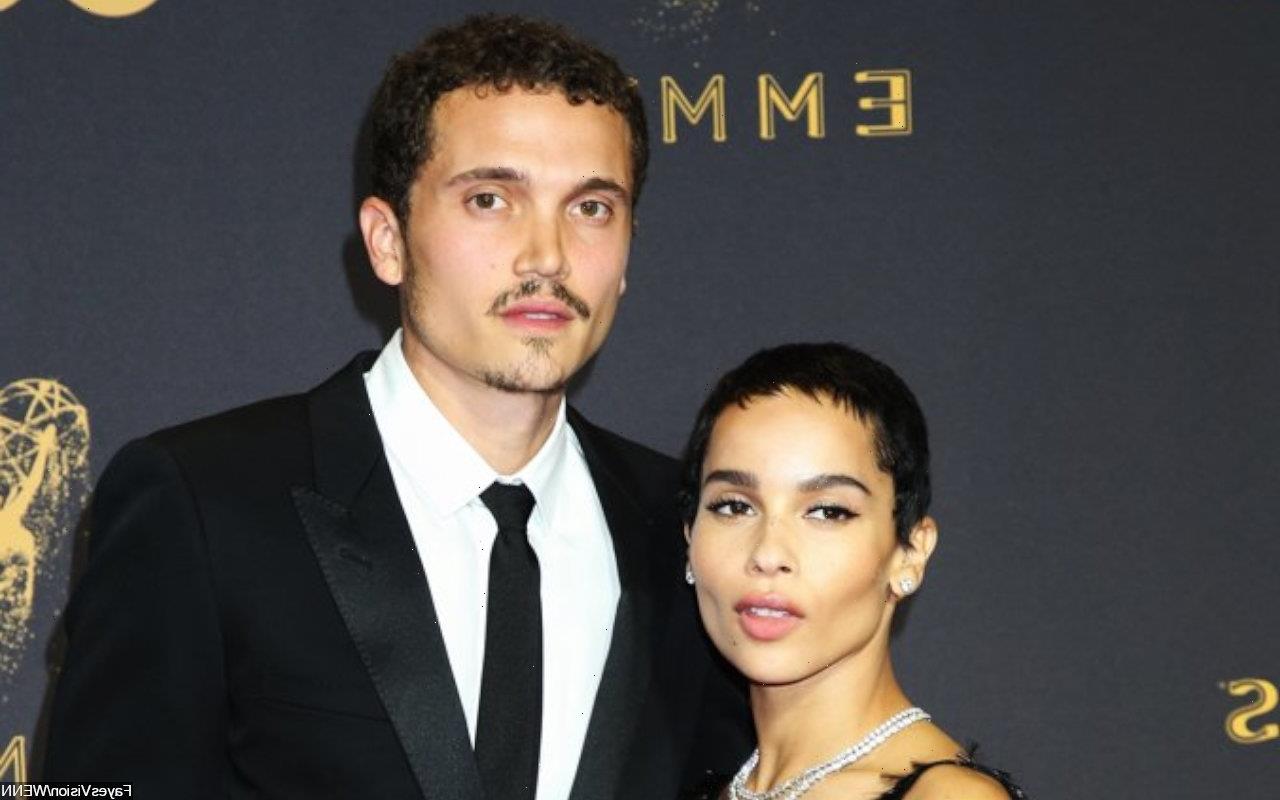Meet the world’s youngest astronomer! Nicole Oliveira, 8, joins a NASA-affiliated programme searching for asteroids – and has already spotted 18 space rocks
- Oliveira is involved in the International Astronomical Search Collaboration
- This citizen science project involves data being given to amateur astronomers
- Teams from schools, universities and colleges compete to find asteroids
- The eight-year-old from Brazil will get to name her discoveries if they are confirmed as asteroids, but this process can take up to five years
An eight year old girl has joined a NASA-affiliated programme searching for asteroids, and has already spotted 18 space rocks, according to her family.
Nicole Oliveira, from Fortaleza, Brazil, has had an interest in space since she was a toddler, and was throwing her arms to reach for the stars while learning to walk.
At age eight she has been dubbed ‘the world’s youngest astronomer’ thanks to her work with NASA, which also involves attending seminars and meeting science figures.
The project she is involved with is known as ‘Asteroid Hunters’ and is designed to introduce young people to science by helping them make their own discoveries.
Brazilian 8-year-old astronomer Nicole Oliveira poses for a picture with her telescope in Fortaleza, Brazil, on September 21, 2021
Nicole Oliveira has had an interest in space since she was a toddler, and was throwing her arms to reach for the stars while learning to walk in her native Brazil
‘ASTEROID HUNTERS’: A CITIZEN SCIENCE PROJECT TO FIND SPACE ROCKS
The International Astronomical Search Collaboration provides high-quality astronomical data to citizen scientists around the world.
These citizen scientists are able to make original astronomical discoveries and participate in hands-on astronomy.
It is a free service that draws in observations from around the world, and with support from a wide range of international organisations.
One of the projects it runs is a series of ‘Asteroid Search Campaigns’ – each one of the campaigns is a month-long event in which teams search for asteroids.
These asteroids can be difficult to spot, and involve looking for tiny changes in pictures taken over multiple nights.
Her room is filled with posters of the Solar System, according to her family, with miniature rockets and Star Wars figures littering her shelves.
She works from a computer with two large screens, where she spends her spare time studying images of the night sky taken by telescopes to look for space rocks.
Asteroid Hunters is run by the International Astronomical Search Collaboration, a citizen science program affiliated with NASA.
Her involvement came about due to the fact Brazil’s ministry of science is one of the partnership organisations, working with NASA and others.
Beaming with pride, Nicole told AFP she has already found 18 asteroids, and plans to name them after Brazilian scientists and family members, like her mum and dad.
It could take several years for her 18 discoveries to be confirmed as a space rock, but if they are then she would become the youngest person in the world to officially discover an asteroid.
She’d break a record set by Italian amateur astronomer, Luigi Sannino, who spotted two asteroids in 1998 and 1999 aged 18.
‘She really has an eye. She immediately spots points in the images that look like asteroids and often advises her classmates when they are not sure they have really found any,’ Heliomarzio Rodrigues Moreira, Oliveira’s astronomy teacher told Afp.
She attends a private school in the city of Fortaleza in northeastern Brazil on an academic scholarship.
‘The most important thing is that she shares her knowledge with other children. She contributes to the dissemination of science,’ added Rodrigues Moreira.
The family relocated to Fortaleza from their hometown of Maceio, a 600 mile move, so she could take up the scholarship.
‘We understood that this passion for astronomy was serious when she asked us for a telescope as a birthday present when she turned four. I didn’t even really know what a telescope was,’ her mum, Zilma Janaca told Afp.
At age eight she has been dubbed ‘the world’s youngest astronomer’ thanks to her work with NASA, that also involves attending seminars and meeting science figures
The project she is involved with is known as ‘Asteroid Hunters’ and is designed to introduce young people to science by helping them make their own discoveries
She didn’t get the telescope until she turned seven, after all her friends pooled their money to purchase her the device.
The youngster has interviewed astronomers, met with the Brazilian minister of science, and the only Brazilian to go to space, Marcos Pontes.
Nicole wants to become an aerospace engineer and build rockets when she grows up, with the hope of one day going to the Kennedy Space Center in Florida ‘to see their rockets’.
The International Astronomical Search Collaboration provides high-quality astronomical data to citizen scientists around the world.
These citizen scientists are able to make original astronomical discoveries and participate in hands-on astronomy.
Beaming with pride, Nicole told AFP she has already found 18 asteroids, and plans to name them after Brazilian scientists and family members – like her mum and dad
Her room is filled with posters of the Solar System, according to her family, with miniature rockets and Star Wars figures littering her shelves
It is a free service that draws in observations from around the world, and with support from a wide range of international organisations.
One of the projects it runs is a series of ‘Asteroid Search Campaigns’ – each one of the campaigns is a month-long event in which teams search for asteroids.
Citizen scientists sign up as part of a team, with most coming from high schools, colleges and universities. If they spot a space rock, then after confirmation, which takes up to five years, they can officially give their discovery a name.
Names are proposed to the International Astronomical Union (IAU), the global body that designates names to minor planets and asteroids in the Solar System.
Father and son, 7, join volunteer team and help discover two new gaseous planets orbiting a star 1.5times the size of the sun more than 350 light-years away – by poring over NASA data
Two exoplanets orbiting a star larger than the sun that is 352 light-years from Earth have been spotted by a group of citizen scientists, including a father and his seven-year-old son.
The star, known as HD 152843, is host to two planets – b and c – and is a bright G dwarf star, which has an extreme surface temperature ranging between 5,300 and 6,000 Kelvin. It has a similar mass to our sun (which is also a G star), but is 1.5 times bigger and ‘slightly brighter,’ NASA said.
Planet b is roughly the size of Neptune – 3.4 times the size of the Earth – and orbits HD 152843 once every 12 days.
Planet c is approximately 5.8 times as large as Earth and spends anywhere between 19 and 35 days orbiting HD 152843.
For comparison purposes, Mercury, the closest planet to the sun in the solar system, has an orbit of 88 days.
Source: Read Full Article








